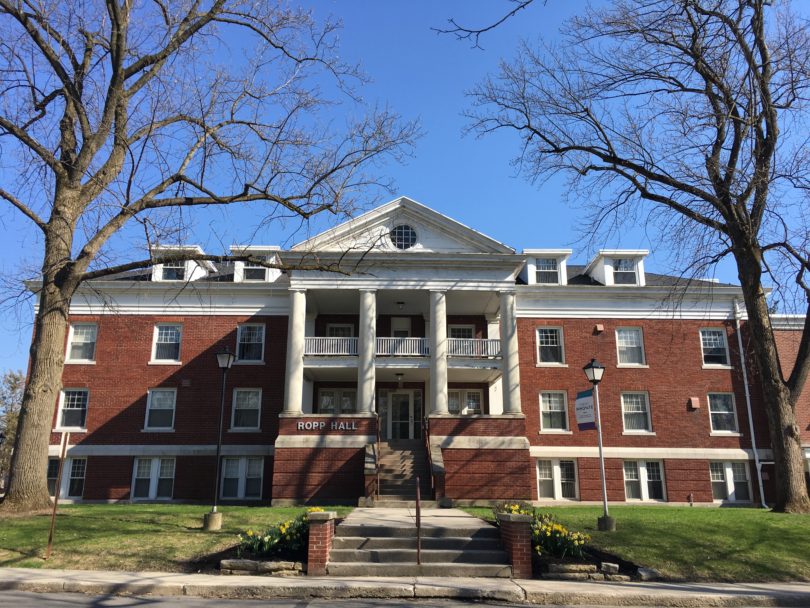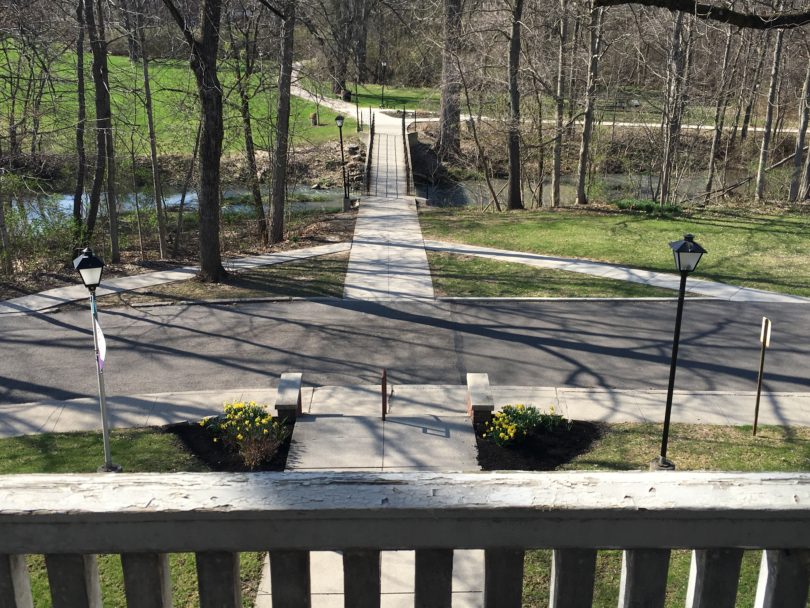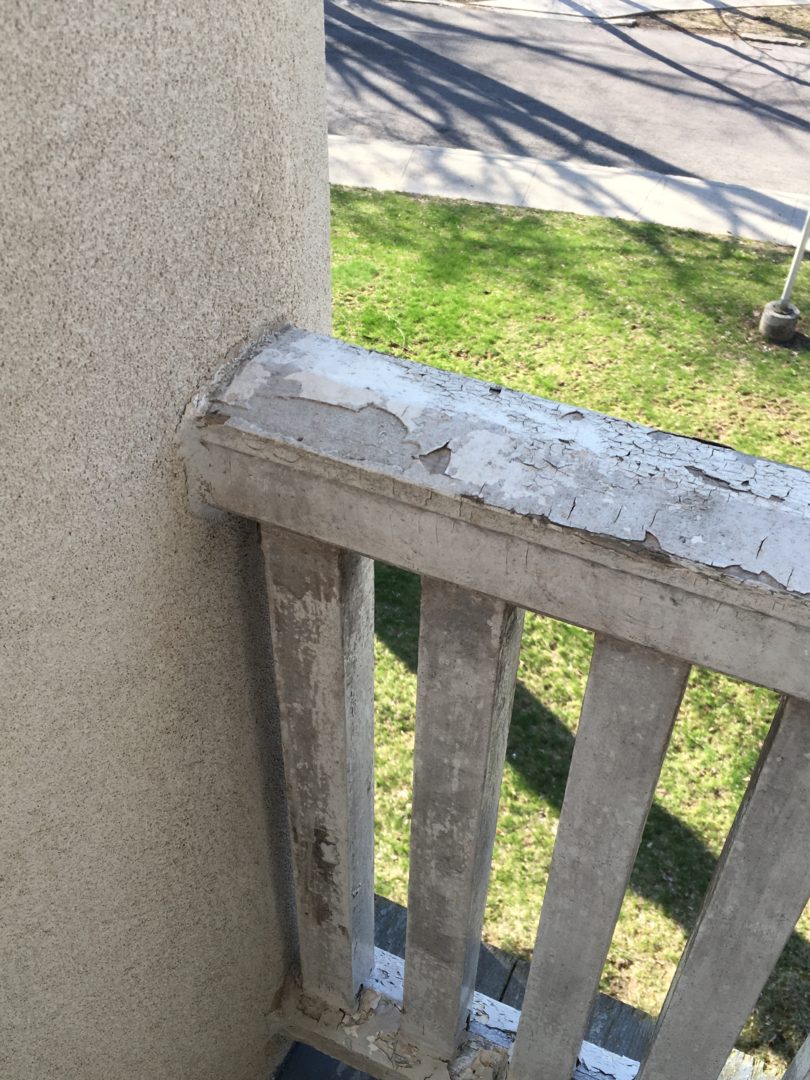Ropp Hall is a building with a soul. From the antique radiator in the corner of my room to the etching of a heart with initials in my windowsill, I’m often reminded there is history in its walls. Its very structure holds the stories of generations dating back to 1914. After living in Ropp for three years, my own stories have had a chance to settle in.
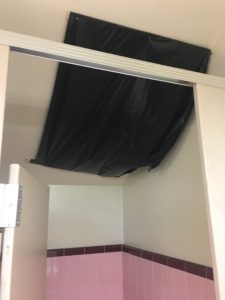
A repair job done to the bathroom ceiling on the fourth floor of Old Ropp. Photo by Hannah Conklin
Ropp feels like home to me, but it’s a home that’s seen better days. Its once-stately columns and front porch are crumbling. When a leak showed up in a bathroom months ago, it was covered with a trash bag that remains today.
Today, Ropp houses less than half of its capacity with only 106 residents, according to current Hall Director Jacob Morton-Black. Floors in Ropp Annex and Addition are closed entirely, and rooms sit empty in nearly every hallway.
If Ropp is a beloved piece of our institution’s history and has the capacity to house the largest number of students, why does it sit with empty floors in a state of disrepair? You can’t fix a century-old building with a trash bag—it requires a certain level of attentiveness, care and love.
I write not as a grouchy resident but as person who cares deeply about the future of Ropp. This is not a complaint—this is a call to do more to take care of a building that holds a special place in my heart and in the legacy of Bluffton University.
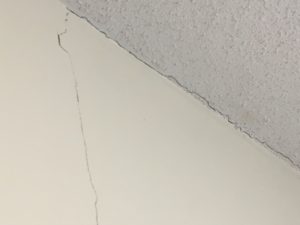
Portions of the walls in Old Ropp have cracked. Image taken on the third floor. Photo by Hannah Conklin
The original building overlooking Riley Creek, now called Old Ropp, was constructed in 1914 as the first residence hall for women. Ropp Annex was built in 1958, and Ropp Addition was completed in 1967, enclosing the courtyard and bringing its total capacity to 231 students, according to the Bluffton University website.
Before Marbeck Center was built, the Ropp basement served as the campus dining hall. The basement later served as a classroom with faculty offices housed in Old Ropp. It survived a 1998 fire in Ropp Addition. Ropp has been a foundational part of the Bluffton experience for thousands of students over the decades.
I once had the pleasure of being stopped in a hospital lobby by a man who spotted my Bluffton Beavers t-shirt. A Bluffton alum from the 1960s, he chuckled and his eyes brightened when I told him I lived in Ropp Hall—he hadn’t lived there, but he’d enjoyed his meals in its basement. Though half a century had passed, Ropp mattered to him. It matters to me.
When I reached out to the university’s Public Relations office about the structural preservation of Ropp, I was referred to Hans Houshower, vice president for advancement.

The exterior of Old Ropp. Photo by Hannah Conklin
In our conversation, Houshower assured me he hadn’t forgotten about Ropp. He explained the process of master planning that occurred most recently in 2014, referenced replacements made to the Ropp roof and spoke with genuine affection about the building I call home.
“We haven’t ignored or abandoned it,” said Houshower. “I’m aware from the master plan it has challenges—I’m sure residents experience them—but it’s definitely still in the planning considerations about our different housing options on campus.”
Ultimately, Houshower confirmed there is nothing currently in the works for Ropp.
“I can’t predict the future or the timeline for what we’ll actually do for Ropp, but what I can say is that it’s still considered to be part of the overall campus undergraduate housing experience,” said Houshower.
The question of how Ropp found itself in its current condition is a complex one involving administration, Residence Life and Buildings and Grounds.
Some may say Ropp finds itself in its current condition because of finances.
Sure, renovations are expensive. Upkeep to a building partially constructed over a hundred years ago is costly, and I’m not naïve enough to think Bluffton has extra cash lying around. This comes down to priorities, however. How do we prioritize maintaining our historic buildings?
Others may say students are part of the problem—perhaps the building could be better maintained if students did a better job practicing the enduring value of respect in their residence halls.
This suggestion is valid as well. If broken windows and downed light poles are any indication, there are students on this campus who fail to take care of our buildings. Students make messes, they act out of impulse or intoxication, and our buildings suffer because of it.
Students need to be held accountable and charged for such incidents of blatant disrespect, but the problem I’m referencing extends beyond student responsibilities.
Students are not at fault for the crumbling condition of the Old Ropp balcony. Students didn’t cause cracks in the walls. Students did not cause the roof to leak. Students are, however, the ones who bear the brunt of such issues.
I don’t want to see Ropp Hall meet the same fate as Lincoln Hall.
Don’t get me wrong—I am excited about growth on campus. The plot of dirt where the Knowlton Science Center will stand is a sign of great hope for Bluffton’s future, yet I am concerned with how the past is being preserved. We should seek to preserve our legacy buildings as we expand with shiny new ones.
I will soon be an alumna of Bluffton University. In a month, I’ll no longer lay my head down at night in Old Ropp. Fixing a leak or updating a decrepit bathroom will not mean much to me in the grand scheme of things—preserving this building for future generations will. It comes down to stewardship.
Are we treating Ropp like it matters, or are we letting it go to ruin? Will we forget Ropp Hall, or will we preserve its legacy for the thousands of students who have yet to add their stories to its halls?

